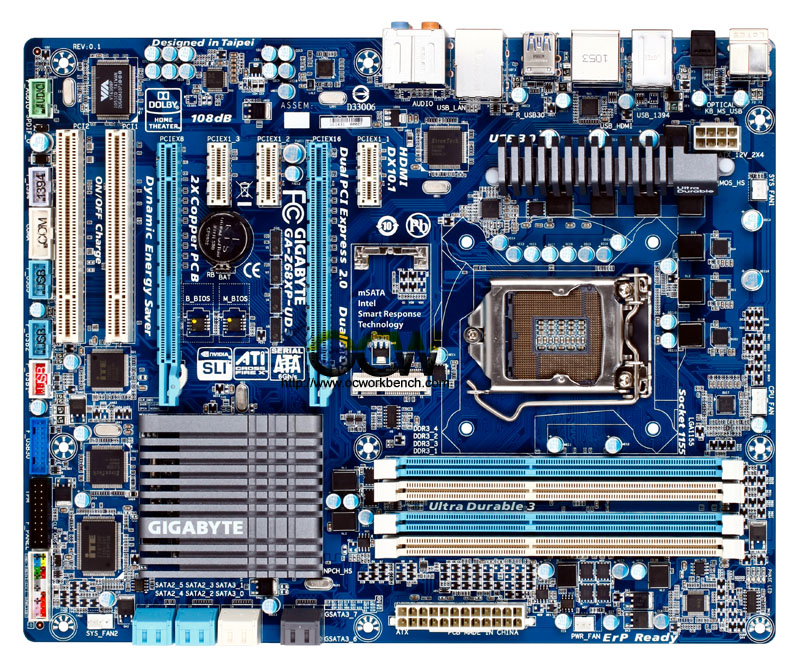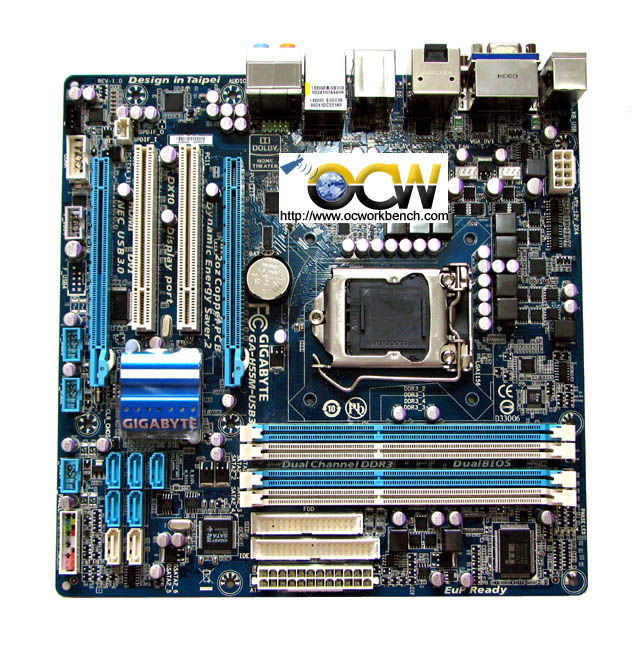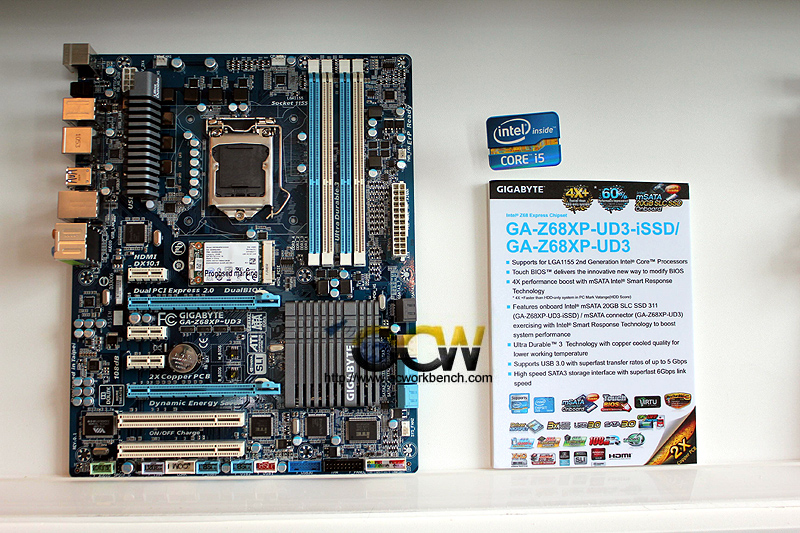Gigabyte GA-Z68X-UD7-B3 mainboard Review Intro
Bluetooth 28 Jun 2011
If you have been longing to buy the top notch Intel P67 board, you should hold your horses and check out the Gigabyte GA-Z68X-UD7-B3 mainboard.
Gigabyte seems to have chosen the Z68 chipset for it’s high end board, enhancing the feature set on P67 with a subset of the Z68 feature. The Intel Smart Response Technology that caches and speed up your disk access.
With GIGABYTE EZ Smart Response it does all of this automatically, without users having to perform a complicated install process. This allows them to quickly and effortlessly enjoy a significant boost in system performance. This is not the case for other vendor’s boards.
Gigabyte incorporated TOUCH BIOS, a new way to change settings in your BIOS just like an iPhone from within Windows with a click or finger (with touch screen panels).
Although it supports this good feature of the Z68, this board does not come with any video output port. Basically you cannot use it as a standalone board with graphics unlike other Z68 boards. Lucid Virtu is also not supported to tap the video transcoding power of the Core i5 processor.
The mainboard supports 4 x 1.5V DDR3 DIMM sockets supporting up to 32 GB of system memory of DDR3-2133/1866/1600/1333/1066 MHz memory modules with XMP. For multimedia, it is equipped with Realtek ALC889 audio codec for 7.1 with Dolby Home Theater. There is also dual GbE with Teaming.
On board, there are 2 x PCI Express x16 slots, running at x16 (PCIEX16_1, PCIEX16_2). Another 2 x PCI Express x16 slots, running at x8 (PCIEX8_1, PCIEX8_2). The PCIEX8_1 slot shares bandwidth with the PCIEX16_1 slot and the PCIEX8_2 slot with PCIEX16_2. The PCIEX16_1/PCIEX16_2 slot will operate at up to x8 mode when the PCIEX8_1/PCIEX8_2 is populated. There is x PCI Express x1 slot and 2 x PCI slots. The PCIe 2.0 supports 2-Way/3-Way ATI CrossFireX™/NVIDIA SLI technology.
The Intel Z68 chipset supports
Chipset:
- 2 x SATA 6Gb/s connectors (SATA3_0, SATA3_1) supporting up to 2 SATA 6Gb/s devices
- 4 x SATA 3Gb/s connectors (SATA2_2~SATA2_5) supporting up to 4 SATA 3Gb/s devices
- Support for SATA RAID 0, RAID 1, RAID 5, and RAID 10
In addition, the two Marvell chips suppot
- 2 x SATA 6Gb/s connectors (GSATA3_6, GSATA3_7) supporting up to 2 SATA 6Gb/s devices
- 2 x eSATA 6Gb/s connectors (eSATA/USB Combo) on the back panel supporting up to 2 SATA 6Gb/s devices
- Support for SATA RAID 0 and RAID 1
The board has plenty of USB 2.0/3.0 ports.
Chipset:
- Up to 8 USB 2.0/1.1 ports (4 on the back panel, including 2 eSATA/USB Combo, 4 via the USB brackets connected to the internal USB headers)
2 x Renesas D720200 chips and 2 x VLI VL810 hubs:
- Up to 10 USB 3.0/2.0 ports (6 on the back panel, 4 via the USB brackets connected to the internal USB headers)
* The USB 2.0 signals of the 6 USB 3.0/2.0 ports on the back panel are from the Chipset.
As for 1394, the T.I. TSB43AB23 chip:
- Up to 3 IEEE 1394a ports (2 on the back panel, 1 via the IEEE 1394a bracket connected to the internal IEEE 1394a header)
Other features include a 24 phase power design, dual CPU Power technology (workstation class redundant power design), 100% hardware VRD 12 compliant CPU power design, Driver MOSFETS.
Othe features include 108dB S/N ratio playback, DualBIOS 3TB+ HDD, Ultra durable 3, ON/Off charge technology, SuperSpeed USB 3.0, Turbo XHD, DES2, 10 USB 3.0 / 6SATA3, Cloud OC, Auto Green etc.







[…] Gigabyte GA-Z68X-UD7-B3 mainboard Review […]